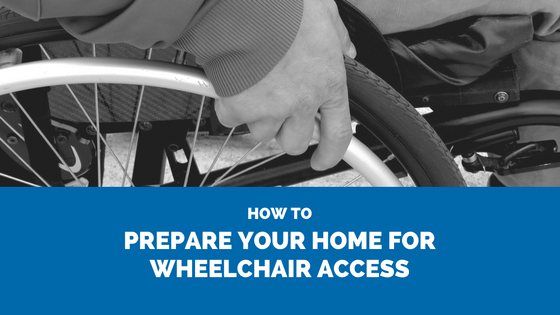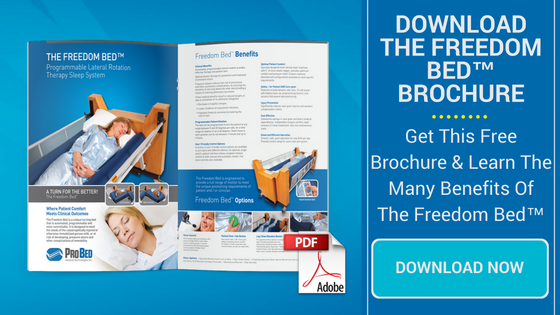
Preparing your home for wheelchair access doesn’t have to be a daunting task. For the majority of families, adjusting or updating your collective homes to accommodate members of the family with limited mobility is a fact of life that will inevitably take center stage.
There are many considerations one should investigate prior to beginning the task of preparing your home to be wheelchair accessible, from the driveway to the bathroom. They key is often how you can consider promoting independent living and a safe, easily maneuverable space for your loved ones.
Update or Move?
One of the first things you should consider is whether or not updating or renovating the individual's home is worth the effort and cost.
Begin by assessing the potential for adaptability in the home. Look at things like the width of hallways, for example. An adult wheelchair needs at least, 36 inches of room to move freely within, and requires 60 inches of space to complete a full 360 degree turn. If the hallways of the home are too narrow, you may want to consider finding a space that can accommodate a wheelchair more easily, as renovating the structural bones of the dwelling may not be a possibility.
As well, consider the heights and angles at which everyday functional amenities lay. Wall mounted light switches, thermostats, and intercoms should ideally be no higher off the floor than 54 inches for a sideways reach, and 48 inches for a forward reach to ensure they are easily accessible for the individual using the wheelchair.
Countertops and tables should be no more than 34 inches tall, and knee placement should be approximately 27 inches tall, at least 30 inches in width, and 19 inches deep. The costs of modifying a home to accommodate these important changes may be overwhelming, and in such cases, moving altogether or building to suit the needs of the individual may be the best avenue.
That being said, many home updates and revisions are relatively small and inexpensive – it’s simply a matter of gauging what you have to work with and making an informed decision as to what’s going to be best for your particular physical capabilities, limitations, and needs.
Entrances
Most homes will require an access ramp from the outside. In addition to being wide enough to accommodate a standard adult sized wheelchair, grade must also be considered. As a general rule, for every one inch of vertical incline, there must be at least 12 inches of length.
A vertical lift could also be considered for a home entrance that is elevated off the ground and located in a congested area.
Doorways should also be considered for wheelchair and walker access. Doors can easily be widened by removing the existing door and trim. This could also mean relocating and re-adjusting a wall mounted light switch. Installing swing away door hinges is a good idea as well, as many doors only open to 90 degrees, meaning the door will still be in the way of the wheelchair as it enters the house.
Stairs
Navigating a set of stairs for an immobilized individual can be a daunting and frightening task. Various flat platform stair lifts usually come equipped with a swiveling seat making for easy entry, and are available and can be custom fabricated to fit just about every shape and size of stairwell imaginable.
These lifts provide full mobility and a priceless feeling of independence for the user within their existing 2 or 3 story home, and operate much like a diagonal elevator.
Bedrooms
The biggest issue with bedroom accessibility for a person with a disability or limited mobility is getting in and out of bed as safely as possible for both the user and the care-giver. This can be accommodated with a manual or power lift that utilizes a hydraulic mechanism to physically lift the person into and out of a bed. A ceiling lift is a more advanced system with tracks in the ceiling to allow movement within the room.
There are superior bed options available that offer programmable lateral rotation therapy, and are perfect for individuals with limited mobility who cannot turn themselves during the night. This is especially important to the comfort of the individual and assists in providing uninterrupted sleep without the requirement for overnight support personnel. Options such as the Freedom Bed provide those with limited mobility with unwavering health benefits as well as an improved lifestyle – for both bed-users and their families.
The lateral rotation achieved with rotating medical beds improves overall health and wellness while improving the quality of sleep. A feature unique to The Freedom Bed is the air-powered head and leg raising system that allows the user to be raised into the sitting position. This is a substantial benefit to those who require the use of a lift. It can be adjusted to meet the unique requirements of each individual bed-user, rather than being built to accommodate the average person. Low-pressure air cushions under the mattress raise the individual and conform to their body shape providing a complete range of customized ergonomic positions.
A healthy, mobile person turns from side to side several times while sleeping, relieving pressure, stimulating the body, improving circulation, and helping to prevent problems associated with immobility. Immobilized people who cannot turn or rotate frequently enough are at significant risk of developing pressure ulcers (also known as bed sores), kidney and bladder infections, and pulmonary/respiratory infections, including pneumonia.
Bathrooms
Bathrooms can be easily remodeled to accommodate someone in a wheelchair. Consider widening the doors, and ensuring that a minimum turn-around space of 60 inches is attainable before doing any renovating.
Bathtubs and showers can be hazardous, yet essential, features of the house for an immobilized individual. Transferring from a tub to a shower in particular can be a difficult process. The tub and shower area, therefore, should be inspected and designed for maximum safety potential. Consider a prefabricated roll-in shower set that makes it easy for the person to simply change wheelchairs and roll into the shower space. Space may again be a hindrance to this type of plan, but it can assist with increased freedom and independence. A small wheelchair lift for an existing bathtub is also another viable option.
Toilet seat requirements vary from one person to another, but as a general rule, standard residential toilets rest at a height of approximately 17 inches. This can make it difficult for the individual to get back in their chair. A 19-inch tall replacement can make all the difference, or simply install a raised seat. A support bar close by will also assist the individual to get up and back into and out of their wheelchair.
Sinks can also be adapted to accommodate wheelchairs. Under-sink cabinets can be removed to allow the individual to be within reasonable reach of the faucets. Lowering the countertop may also be considered here.
Floors
Carpet can reduce mobility for a wheelchair user. Opting for hardwood, or engineered hardwood, tile, or vinyl flooring is a good option to increase the level of ease the individual can experience within their home.
Rubber ramps can be installed to compensate for raised door jams and entranceways as well. Exposed cords that make mobility difficult can easily be covered up by a new area rug, or hidden in the walls as part of your ongoing renovation process.
---
These accessibility considerations will help you and your loved ones to make your home wheelchair accessible. Whether you choose to move to a new home or not, these basic measurements, guidelines and suggestions can be used to formulate a renovation plan to help encourage a growing feeling of independence and freedom for the individual affected by immobility.
By promoting a more active, independent lifestyle, accessibility changes like these can help the individual as well as their families and caregivers experience and promote balanced and healthy living habits.


